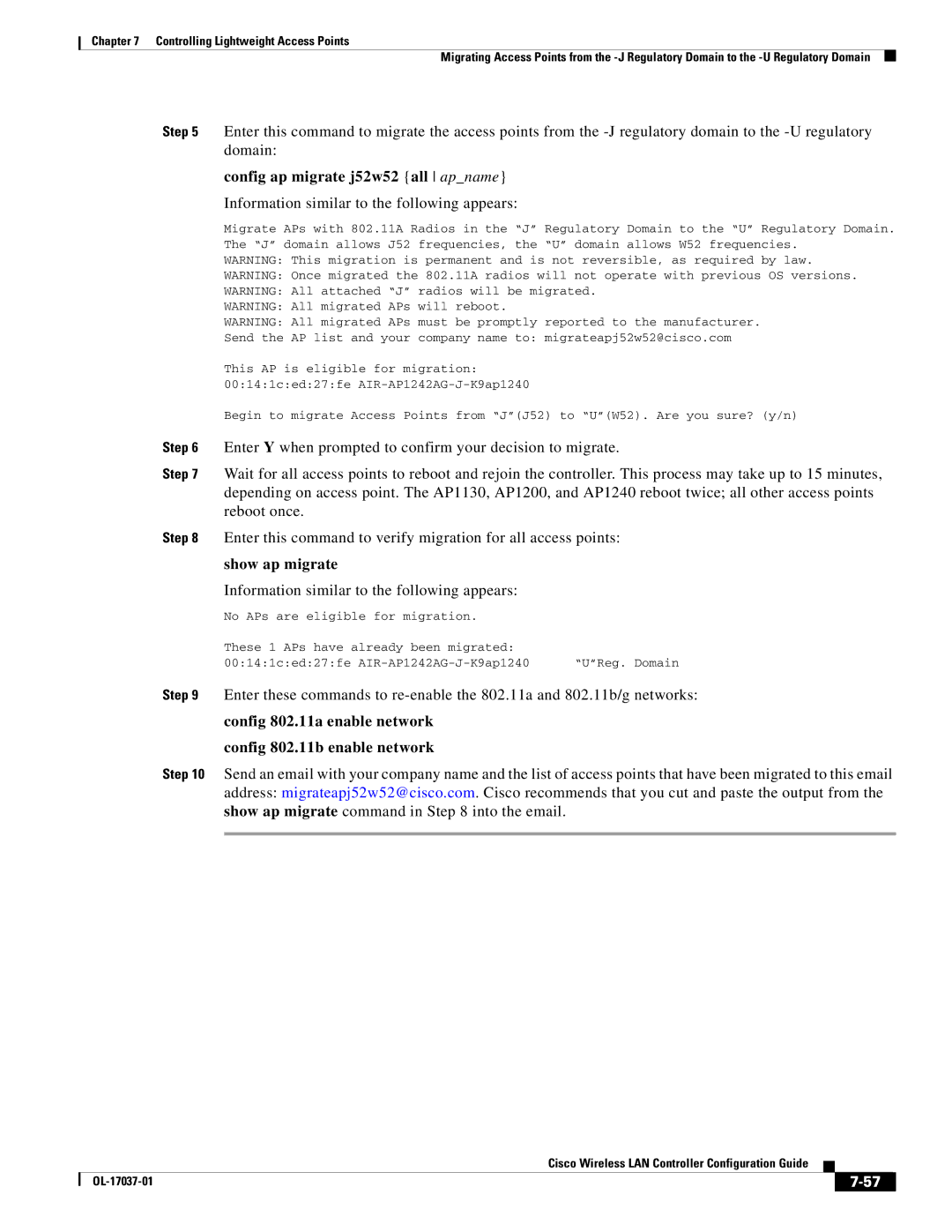
Chapter 7 Controlling Lightweight Access Points
Migrating Access Points from the
Step 5 Enter this command to migrate the access points from the
config ap migrate j52w52 {all ap_name}
Information similar to the following appears:
Migrate APs with 802.11A Radios in the “J” Regulatory Domain to the “U” Regulatory Domain. The “J” domain allows J52 frequencies, the “U” domain allows W52 frequencies.
WARNING: This migration is permanent and is not reversible, as required by law.
WARNING: Once migrated the 802.11A radios will not operate with previous OS versions.
WARNING: All attached “J” radios will be migrated.
WARNING: All migrated APs will reboot.
WARNING: All migrated APs must be promptly reported to the manufacturer.
Send the AP list and your company name to: migrateapj52w52@cisco.com
This AP is eligible for migration: 00:14:1c:ed:27:fe
Begin to migrate Access Points from “J”(J52) to “U”(W52). Are you sure? (y/n)
Step 6 Enter Y when prompted to confirm your decision to migrate.
Step 7 Wait for all access points to reboot and rejoin the controller. This process may take up to 15 minutes, depending on access point. The AP1130, AP1200, and AP1240 reboot twice; all other access points reboot once.
Step 8 Enter this command to verify migration for all access points:
show ap migrate
Information similar to the following appears:
No APs are eligible for migration.
These 1 APs have already been migrated: |
|
00:14:1c:ed:27:fe | “U”Reg. Domain |
Step 9 Enter these commands to
config 802.11a enable network
config 802.11b enable network
Step 10 Send an email with your company name and the list of access points that have been migrated to this email address: migrateapj52w52@cisco.com. Cisco recommends that you cut and paste the output from the show ap migrate command in Step 8 into the email.
|
| Cisco Wireless LAN Controller Configuration Guide |
|
| |
|
|
| |||
|
|
|
| ||
|
|
|
| ||
